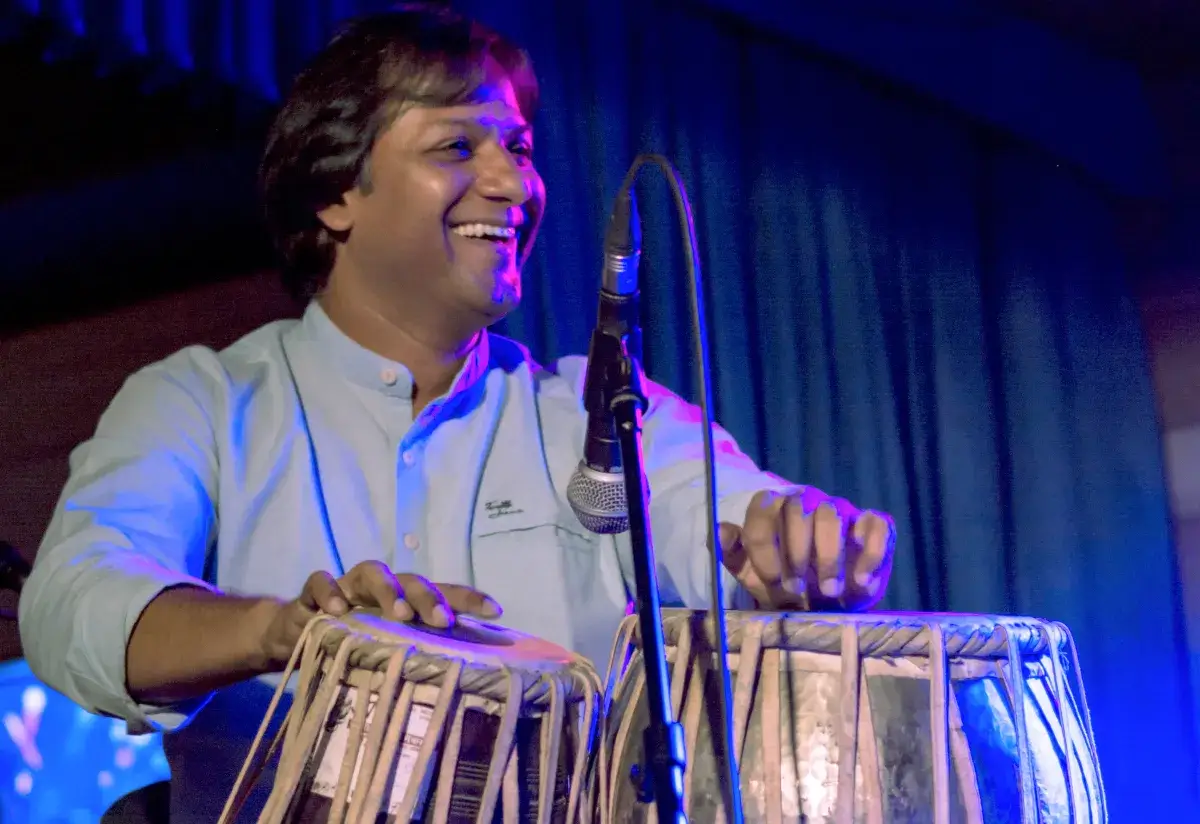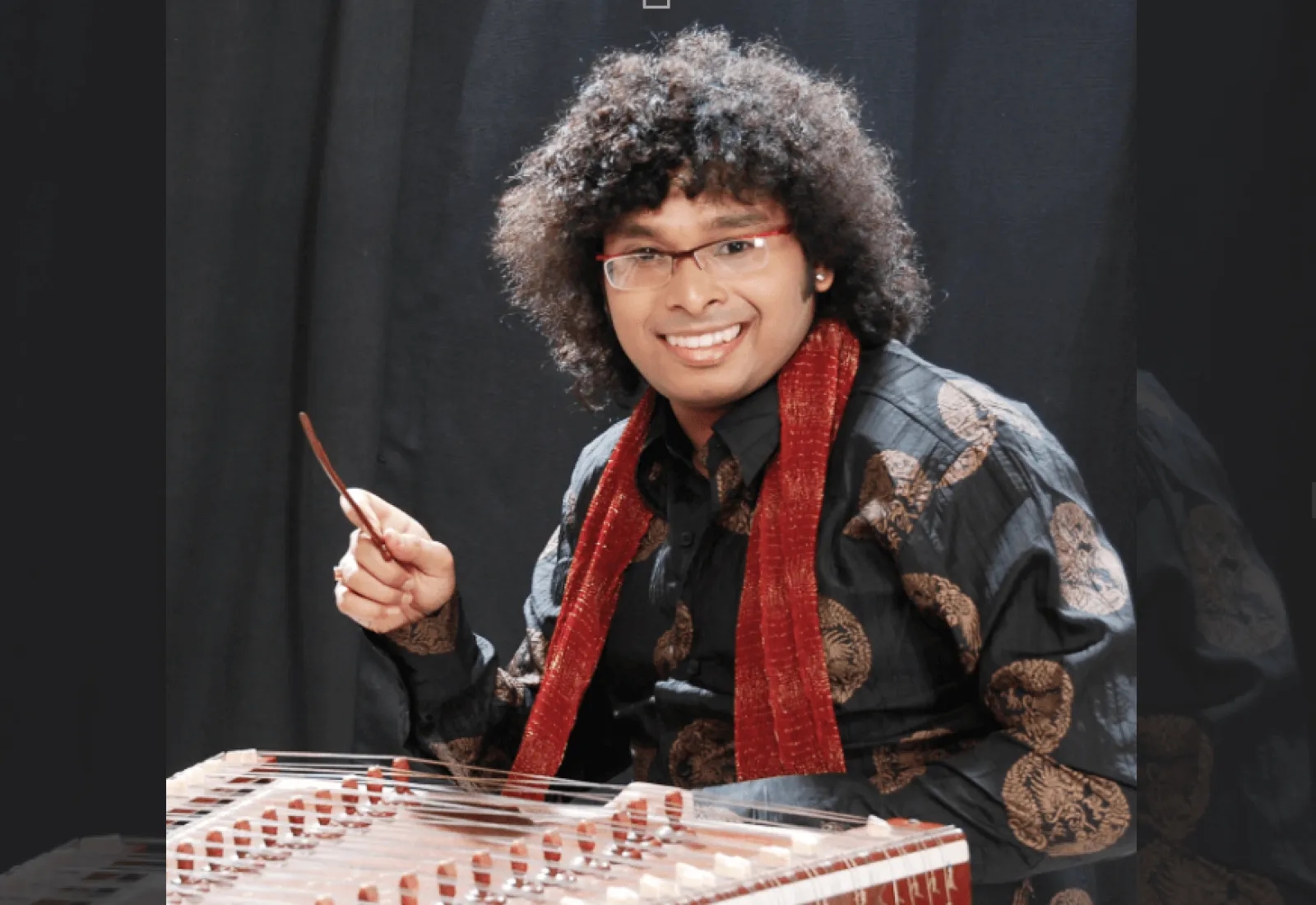Learn How to Tune a Kanjira
The infused sounds of the beats of the drum and the sharp clinking of the jingles at the shell feel as if someone is calling upon the gods from heaven- such is the music of Kanjira.
Contrary to its small size (a little bigger than the size of a palm), Kanjira can produce powerful music- earthly, natural, and organic. Kanjira, the frame drum is an important accompanying instrument in Carnatic classical music but is as impactful when performed solo.
Once a temple instrument, Kanjira was originally remodelled and introduced to Carnatic music by Pudukottai Manpoondia Pillai in the 1880s. He is considered the 'Pitahmaha' for the Pudukottai tradition of South Indian percussion. His disciple Pudukottai Dhakshinamoorthi Pillai popularised the Kanjira in the music arena. Kanjira's status got elevated with the efforts of Hari Shankar Ji who took this musical instrument to the international stage.
Unlike other percussion instruments like mridangam or the ghatam, the Kanjira has no particular pitch. The tuning process depends on the type of the Kanjira, whether it is the original Kanjira or the Remo Kanjira.
Before learning how to tune a Kanjira, it is important to understand the instrument very well. Keep reading to get in tune with this simple yet amazing instrument.
Know your Instrument- the Kanjira
The shell of the Kanjira is made using the wood of the Jackfruit tree. And then the skin is stretched all across the diameter of the shell.
Interestingly, the playing head was made of lizard skin earlier! But since the monitor lizard is now enlisted as an endangered species, using its skin in making the playing head has been outlawed in several parts of the world.
The rim has a slit and to it is attached a pair of copper coins (Indian quarter anna coins with a hole drilled in the middle are considered ideal), which gives Kanjira its distinct sound. The simple construction of the Kanjira makes it one of the most portable percussion instruments.
Kanjira Tuning Techniques
The tonal beauty of this instrument is phenomenal. The pitch of a brand new Kanjira is very high, owing to its small size and tight skin. The tuning process of the instrument greatly depends on whether it is a biological skin kanjira or a synthetic skin kanjira.
There are some artists who are of the opinion that the sounds produced by the cattle skin Kanjira are no match to the lizard skin Kanjiras. But, music is not about challenging nature, it is all about getting in sync with the elements of nature.
Today with the help of science, materials very close to the monitor lizard skin can be synthesized, for making the skin of the kanjira.
How to Tune a Biological Skin Kanjira?
The challenge in tuning a traditional Kanjira is that the pitch keeps on varying and needs to be adjusted while performing by sprinkling water at the backside of the play head. This reduces the tension in the skin and a bass sound is obtained.
If the Kanjira is old, the performer needs to sprinkle 6-7 drops of water at an interval of ten minutes. After sprinkling water, the artist rubs and spreads the water evenly at the backside of the play head. The performer plays to check for the pitch and repeats it with two drops of water if the desired pitch is not achieved.
If the Kanjira is new, more water (around 15 drops) is required to achieve the desired pitch. And the process (same as above) is repeated at a smaller interval, say every five minutes.
The process is difficult as there is no fixed protocol for adding water. The amount of water to be sprinkled depends on the skin of the Kanjira. The water-absorbing rate of the skin may vary from instrument to instrument.
PS. Performers should be very careful while using this technique. Lesser water on the play head will produce a higher pitch, whereas if excess water is sprinkled, a dead tone will be obtained. Excess water also takes a lot of time to dry up. While in a concert or while giving a public performance, this can be one of the most undesired situations.
Players who perform in concerts are suggested to use older Kanjiras, the reason being an older kanjira gets tuned more quickly and easily. Artists who buy a new kanjira do not use it in concerts for a minimum of six months. They use their new kanjira for learning and practising fingering and tuning techniques.
Learners who are new to the instrument might feel the entire process very intimidating. They may resort to their teachers to get their Kanjiras tuned in the initial learning process. When the skin becomes very loose, it needs to be replaced. The skin can be purchased at musical instrument stores that sell Kanjiras.
How to tune a synthetic skin Kanjira?
Since monitor lizard skin cannot be sourced, an imitation skin is synthesized for making the play heads of the modern Kanjiras. These synthetic skin Kanjiras are relatively easy to tune as compared to their biological skin counterparts. These have four holes in the shell and they come with a tuner key that makes the entire process hassle-free.
How to tighten the synthetic skin of a Kanjira?
When the skin of the kanjira becomes loose, it is kept in the sun for some time. If the skin becomes loose beyond repair, it needs to be changed.
In the case of a synthetic skin kanjira, the skin gets tightened or stretched as desired with the help of the tuning key.
Mastering the techniques of Kanjira is satiating!
Why playing this little instrument so satiating? Kanjira enthusiasts say that playing this simple-looking instrument is no less than a challenge. It is considered one of the most difficult percussion instruments owing to the fact that it is played with just one hand and the playing head is too small.
From learning the basics of kanjira to attaining perfection in the tuning techniques, every moment of learning this traditional instrument is satisfying to the core. The sound produced by striking the drum head with the fingers is magical. And the sharp cut of the jingles multiplies the intensity of Kanjira music.
Under the guidance of a guru or teacher, you can master the art of playing the Kanjira from scratch. And enjoy every moment of your learning journey without getting frustrated in the initial stages.
One of the smallest and the most portable percussion instruments is a joy to play. Do you wish to experience this joy? You can check out online Kanjira classes taught one-on-one by world-class maestros on ipassio.














